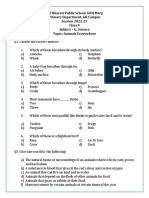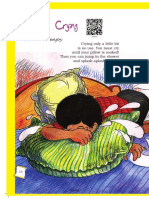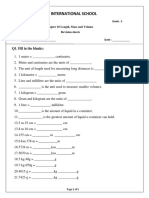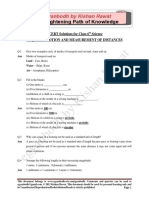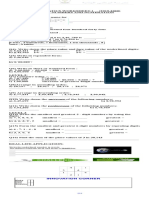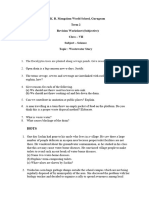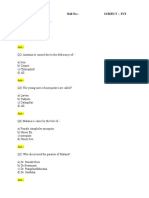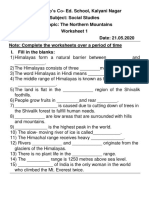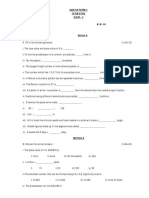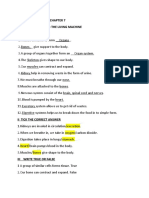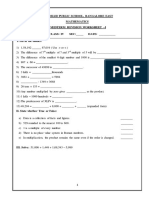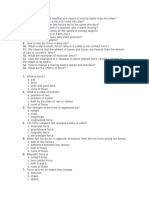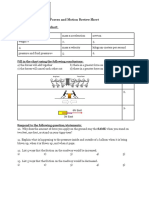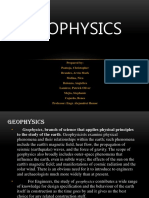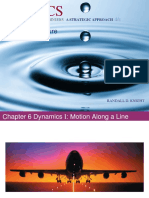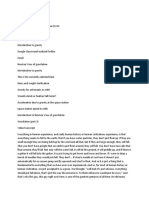0% found this document useful (0 votes)
501 views3 pagesCLASS 5 Force and Magnetism Questions and Answers
The document contains questions and answers related to force and magnetism for Class 5 students. It covers various types of forces, the concept of weight, the nature of friction, and the properties of magnets. Additionally, it explains concepts such as gravity, air resistance, and the effects of forces on objects.
Uploaded by
Amit SaxenaCopyright
© © All Rights Reserved
We take content rights seriously. If you suspect this is your content, claim it here.
Available Formats
Download as PDF, TXT or read online on Scribd
0% found this document useful (0 votes)
501 views3 pagesCLASS 5 Force and Magnetism Questions and Answers
The document contains questions and answers related to force and magnetism for Class 5 students. It covers various types of forces, the concept of weight, the nature of friction, and the properties of magnets. Additionally, it explains concepts such as gravity, air resistance, and the effects of forces on objects.
Uploaded by
Amit SaxenaCopyright
© © All Rights Reserved
We take content rights seriously. If you suspect this is your content, claim it here.
Available Formats
Download as PDF, TXT or read online on Scribd
/ 3

